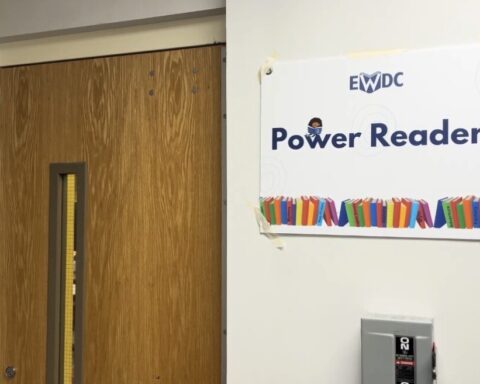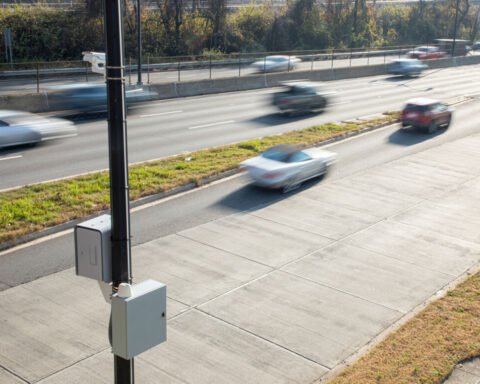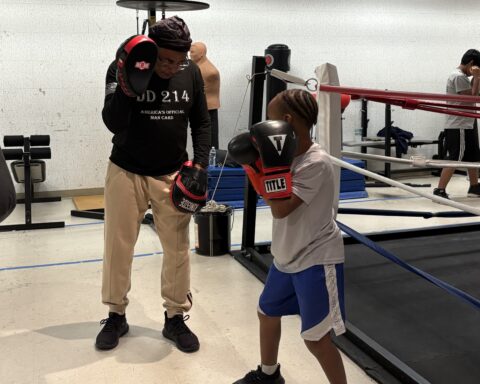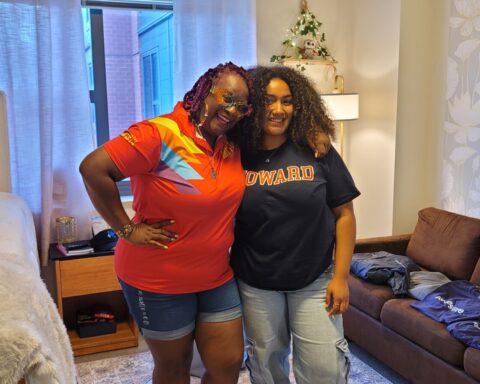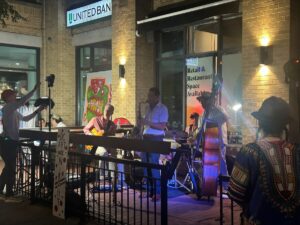Washington, D.C., is home to 21 Smithsonian museums, national monuments, and historic buildings that date back to the 1700’s. But, outside of these national buildings, you can still witness art for free.
Street art is the best “way to get a finger on the pulse of a city,” the website Mad Hatters NYC said. “Street art is an expression of a city’s past, the issues it grapples with present day, and its aspirations for the future.”
MuralsDC recognizes that hundreds of people consistently view the art, which represents the city of Washington, D.C. and wants to learn about its history and symbolism.

“While the major focus [for MuralsDC] was to mitigate urban blight, the murals have also been a great source of documented District history for residents and gives us an opportunity to celebrate local heroes,” said Nance Lyons, the public information officer and MuralsDC coordinator.
“Art has also been proven to have therapeutic benefits. When we work with artists on designs, we try to get them to create works that are uplifting and provide positive energy,” Lyons said.
Lyons explains that the program’s main mission was to keep streets and corridors clean from debris and graffiti. Their initiative was to paint buildings that were repeatedly tagged or at risk of being tagged. Since 2007, the program has worked with local, national, and occasionally international artists to produce these works on public property walls.
“Our short-and long-term goals are to continue to expand our program by partnering with other organizations and incorporating new and emerging art forms in our complete works,” Lyons said.

“I really enjoy the murals. I like to take a lot of walks and be aware of my scenery so it’s nice to see different artwork from local artists,” said Howard University senior sports medicine major and psychology minor from St. Louis Missouri, Jala Muhammad.
Muhammad said she likes seeing the art in the neighborhood she lives in. It brings a sense of community that the area needs, especially with the increase in gentrification.
“When it comes to D.C. street art, I want to see more of it. I’d especially like to see more of it in places that are being gentrified,” Muhammad said.
Muhammad notes that gentrification has taken over the majority of Black and Brown neighborhoods for the satisfaction and comfort of white people.
In doing this, they take away the history of those neighborhoods, which Muhammad hopes the street art could reverse or positively impact the minorities living there.
“So the street art, I feel like they have a chance to take back that area and make it part of their own,” Muhammad said.
And when it comes to Howard University’s campus, art continues to be an impactful way to display its history and culture.
From statues in front of the Blackburn cafeteria to murals on the sides of the College of Engineering and Architecture, plus the trees signifying Greek organizations in the middle of the Yard, some students consider all of these pieces to be art.
“The plots and trees are art, in my opinion,” said Carin Smith, a member of Alpha Kappa Alpha Sorority, Incorporated, Alpha Chapter. “The handcrafted lettering of the sororities and fraternities are symbols of the mission and cultivation of these organizations.”
Smith, who joined the Greek organization in Spring of 2022, notes that the trees are sacred pillars for each sorority and fraternity that is a part of the Divine Nine.
She shares that each tree is a visual representation of the national Pan-Hellenic Council, which was first established at Howard University. They signify the strength of the organization and its maintained longevity.
“I do believe that event monuments or building structures can be pieces of art,” Smith said when asked if monuments and/or significant structures can be considered art.
“Art is so subjective that if someone identifies with the object or piece of work and finds meaning in it, then it can be considered art to them,” Smith said.
She believes that though some monuments stand as symbols for the history or storytelling of an event or place, if the message can produce emotions or feelings like art, it can be considered such.
The trees in Howard’s yard are treated with color and routine touch-ups by members, and Smith sees them as artistic works that are a central part of Howard’s campus.
Avery Harrison is a reporter for HUNewsService.com.



